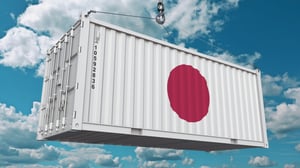
%20(1).jpg?width=1335&height=386&name=shutterstock_387557998%20(1)%20(1).jpg)
Trade in Asia - Middle East
Insights
MENA: Priming New Growth Engines
The United Arab Emirates (UAE) and Saudi Arabia – two of the three largest economies in the Middle East and North Africa (MENA) region – hold the most significant potential for rapid and sustained economic growth over the medium to long term. This potential stems from their massive exports of crude oil and natural gas, and robust efforts to diversify into non-oil sectors. However, ongoing conflicts in the region, cuts in oil production, and tight monetary policy are holding back growth in the region in the short term.
Saudi Arabia at a glance

UAE at a glance

State of the economy
The MENA region experienced a number of setbacks in 2023, including the conflict in Gaza and Israel – which triggered rising tensions for global shipping in the Red Sea – and the earthquake in Morocco. However, the UAE and Saudi Arabia have shown resilience in the face of these challenges, thanks to structural reforms aimed at economic diversification.
The International Monetary Fund (IMF) forecasts UAE’s real GDP to grow 3.4% in 2023 and 4% in 2024. Key drivers include continued government spending on infrastructure, a vibrant services sector (e.g., tourism and hospitality), buoyant financial markets, active real estate and construction activity; and liberal and forward-looking economic policies. These policies include the introduction of a 10-year residence visa for expatriates, the Emiratization of the workforce, and allowing 100% ownership in companies, to name a few. A steady currency and stable domestic political environment also make the country attractive for foreign direct investments (FDI).
The country continues to make significant progress. In its quest to broaden its non-oil revenues. In 2023, non-oil foreign trade of goods and services exceeded AED3.5 trillion (USD953 billion) for the first time despite the global downturn in international trade. This brings the country closer to its goal of nearly doubling its non-oil foreign trade from USD600 billion in 2022 to above USD1 trillion by 2031.The value of non-oil exports last year also increased 16.7% from 2022, increasing their share in the country’s overall foreign trade to 17.1% from 14.1% in 2019.
For Saudi Arabia, the IMF expects growth to increase to 2.6% in 2024 after an estimated -0.8% contraction in 2023, which was largely due to OPEC and voluntary oil supply cuts. Like the UAE, Saudi Arabia is also accelerating its drive to support non-oil-based industries, whose contributions have reached 50% of real GDP in 2023 –- the highest level on record aided by private sector investments, which surged to a record high of SAR959 billion riyals (USD254 billion) in 2023.
Helping boost non-oil sector activity in these economies are measures to encourage businesses to invest with the Global Entrepreneurship Monitor now ranking the UAE, Saudi Arabia and Qatar (in ascending order) as the easiest places for entrepreneurs to start a new business. These countries benefit from world-class infrastructure, close proximity to large export markets like Asia and Europe, high GDP per capita, a stable domestic political climate, fixed foreign exchange, and reform-oriented governments supporting sustained economic growth.
.jpg?width=335&height=189&name=shutterstock_2205370399%20(1).jpg) In the UAE, some notable government initiatives include ‘Projects of the 50’, which include providing priority visas for entrepreneurs, particularly in areas like artificial intelligence, digital currencies, and coding. In addition, reforms in 2018 paved the way for 100% foreign ownership in mainland companies (or companies located outside a free zone) in almost all sectors except a few that are deemed of strategic importance to the government.
In the UAE, some notable government initiatives include ‘Projects of the 50’, which include providing priority visas for entrepreneurs, particularly in areas like artificial intelligence, digital currencies, and coding. In addition, reforms in 2018 paved the way for 100% foreign ownership in mainland companies (or companies located outside a free zone) in almost all sectors except a few that are deemed of strategic importance to the government.
Saudi Arabia, meanwhile, has established a one-stop shop for company incorporation, enhanced the electronic trade single window to expedite trade, launched an online platform to certify imported goods, and upgraded port infrastructure in Jeddah. Other reforms focus on improving access to credit, strengthening minority investor protections, and facilitating the resolution of insolvency.
Qatar has also implemented reforms to encourage the registration of foreign businesses, including reducing the time to obtain an electricity connection and streamlining property registration procedures.
Challenges and risks
These initiatives notwithstanding, the region is vulnerable to volatile crude prices and supply and demand fluctuations given the outsized role of oil in MENA economies. A sustained decline in the price of crude below USD70 per barrel could lead to a fiscal imbalance and hamper economic growth in major oil-producing countries.
At the same time, the Gaza-Israel conflict and tensions in the Red Sea continue to bring uncertainty to the region, negatively impacting tourism and trade in neighbouring countries like Jordan, Egypt, and Lebanon. Attacks on container ships in the Red Sea have resulted in shipment delays – we are aware of delays of between 10 and 28 days to Middle East markets from Europe.
High interest rates and tight credit have also caused liquidity constraints for some businesses, as seen in the marked increase in days sales outstanding (DSO) in the UAE based on the latest Atradius Payment Practices Barometer. However, a loosening of lending terms and lowering of interest rates – after the U.S. Federal Reserve does so later this year – could increase the flow of money and support more B2B trade. The continued positive economic momentum in the large MENA economies would also help smooth B2B credit trades.
While the UAE and Saudi Arabia are among the most pro-business economies in MENA, reforms are still firming up. Saudi Arabia only enacted its insolvency law in 2018. Bankruptcy law in the UAE is at a nascent stage and, to date, there have not been many high-value cases to set a precedence. Hence, overdue accounts or defaults should be dealt with swiftly, and it is best practice for companies to seek trade credit insurance to protect against defaults.
Economic outlook
.jpg?width=335&height=224&name=shutterstock_1128104516%20(1).jpg) Efforts toward growing non-oil sectors will drive future growth of MENA’s largest oil-producing economies. While Gulf Cooperation Council states (Bahrain, Kuwait, Oman, Qatar, Saudi Arabia, and the UAE) have made some progress over the past decade, oil and gas production continues to represent over 40% of GDP in most countries, except for the UAE and Bahrain.
Efforts toward growing non-oil sectors will drive future growth of MENA’s largest oil-producing economies. While Gulf Cooperation Council states (Bahrain, Kuwait, Oman, Qatar, Saudi Arabia, and the UAE) have made some progress over the past decade, oil and gas production continues to represent over 40% of GDP in most countries, except for the UAE and Bahrain.
To support further diversification, the GCC governments are focusing on promoting local manufacturing, investing in renewable energy projects, large-scale investments in the areas of construction and infrastructure development, increasing the contribution of service sectors (like tourism, hotels and entertainment), developing competencies to support exports, and attracting FDI. These governments are also investing in creating free trade zones and financial, business and logistics hubs to increase trade.
The UAE has signed new trade, investment and cooperation deals with countries like India, Israel, Indonesia and Turkey to accelerate its economic transition faster than other Gulf countries and maintain its status as a regional financial and trade hub.
The agreements also offer benefits for companies on both sides, including facilitating company cross-listings, cooperating in sectors such as clean energy, establishing rules for digital trade, protecting intellectual property rights, and supporting business expansion globally, to name a few.
Saudi Arabia’s ambitious economic transformation plan under its Vision 2030 initiative aims to develop tourism and new industries, expand the private sector, and create jobs. The Kingdom is leaning in on non-religious tourism – aiming to increase its contribution from 3% to 10% of GDP by 2030. Meanwhile, it also seeks to attract over USD100 billion in annual FDI by the end of the decade.
Other Gulf countries, such as Qatar, Kuwait, Oman, and Bahrain, are also framing various policies to foster growth but progress has been slow and uneven.
With a multitude of potential trade opportunities in this fluid environment, businesses that want to take advantage of this new period of reforms and investment momentum would do well to understand the region’s local preferences and regulations especially in industries that require having a local business partner. Hence, it is crucial to select the right local partner for long-term sustainable growth. Locally based service providers with a global footprint, like Atradius, can offer deep knowledge and insights on how to thrive in the MENA region, and navigate emerging regulations and policies to capitalise on these opportunities.
This article was produced with the help of insights from the following Atradius experts: Rupa Jagannathan, Managing Director, Atradius Middle East; Ozgur Durgun, Regional Head of Risk Services, Atradius Middle East & India; and Dheeraj Lakhwani, Senior Credit Risk Underwriter, Atradius Middle East & Africa.
All content on this page is subject to our Disclaimer, available here.


